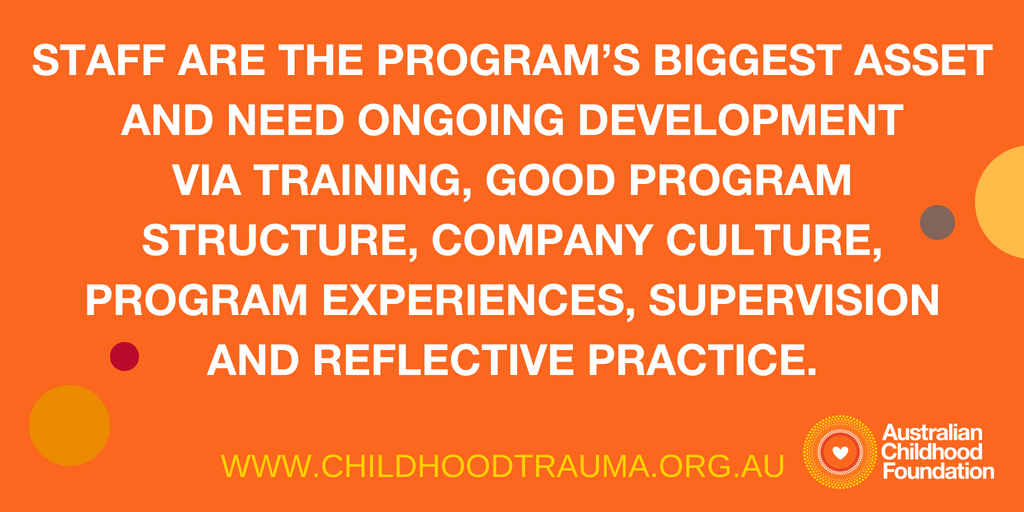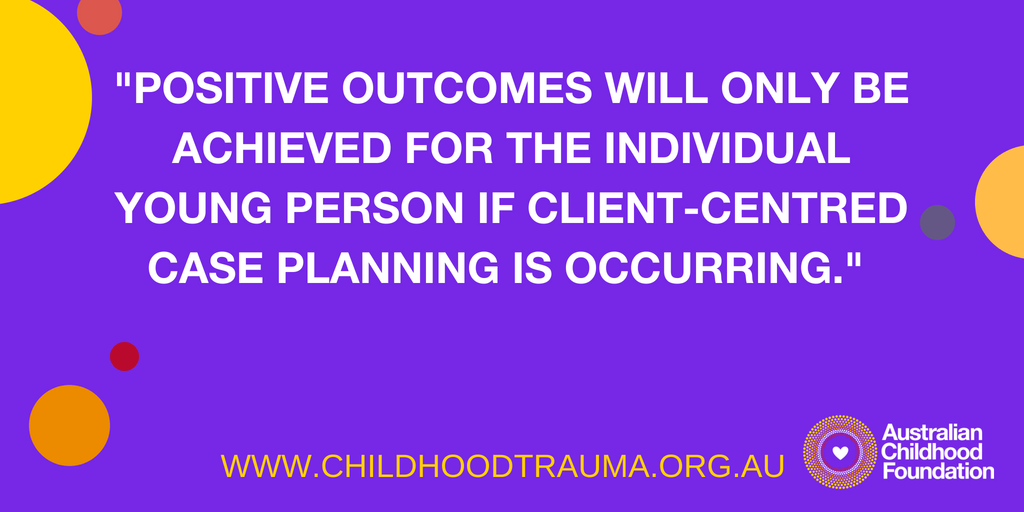
The story of Matti – why good service design in Therapeutic Residential Care means better outcomes for children and young people in care.
This blog is Part 2 of the series written by Brett Smith, Executive Officer at
Allambi Care and a member of the National Therapeutic
Residential Care Alliance. You can view Part 1 here.
Matti’s referral to Therapeutic Residential Care was sent to some selected service providers. One provider thoroughly reviewed Matti’s information and undertook a sustainability assessment (Placement Assessment) focusing on the needs of all young people in the identified placement. The provider believed they could provide Matti a placement that ensured safety and met his ongoing individual support needs. Before Matti transitioned to a group placement with this provider, he was introduced to key care staff. Matti’s carers had an understanding of his history before he arrived, and had received extensive training in trauma and managing associated behaviours. The care team included Matti in developing his routine and supported him while he adjusted to house expectations, they encouraged him to pursue his interests. Matti is passionate and incredibly talented musically, he wanted to play the saxophone as ‘his uncle played the sax’. It was a complete ‘coincidence’… or was it? One of Matti’s carers had an interest in the saxophone and they enjoyed playing together.
A Therapeutic Specialist was matched with Matti. They ensured his care team worked toward clear goals while Matti was adjusting to his new placement. The care team focused on connecting with Matti and helping him to belong in his new environment. Matti was able to develop a friendship with one other young person in his house, and the team encouraged shared positive experiences within their routines. This organisation had a clear direction and a strong therapeutic residential care program that followed the organisation’s framework.
His carers looked past Matti’s behaviour as he continued to test them with every intention to push them away. Lead and trained by a skilled Therapeutic Specialist; the team understood that Matti needed time to adjust to his new environment. The carers continued to show Matti they were committed to him through their caring gestures. With each interaction, they reinforced to him; he could trust them, no matter how he had treated them. The carers could see there was more to Matti, they focused on all of his positive morals and strengths. Reinforcing the routine and structure in the home, Matti was learning to trust the predictable nature of his new home, and develop a feeling of safety and security; the carers were relentless and not satisfied until Matti in his own words, referred to the placement as ‘home’.
While his team were busy with Matti’s day to day needs, Matti’s management team were reviewing his journey from birth to his current placement with the provider, filling gaps in his story and exploring lost connections with family, individuals
There is a place for Therapeutic Residential Care (TRC) in the out-of-home care continuum for those children and young people who for various reasons, cannot reside with family, an adopted parent, a guardian or in foster care. TRC provides an opportunity to work closely with this cohort of young people, with assiduous goals focused on their transition to less intensive models of care. Some children and young people, however, may need to stay in this environment for longer periods of time due to their complex needs, with support aimed at developing their independence and preparing them for life after care. For TRC to be done well Essential Service Design Elements need to be considered by the organisation overseeing the program. These elements are applied at different levels however all are necessary to ensure positive outcomes for the young people in TRC settings. This blog provides a brief overview of the three levels and what, at a minimum, needs to be considered at each. The three levels are:and community. They were beginning to understand what was in Matti’s best interests for his long term care plan.
- The Organisational Level
The Program Level
The Individual Level
Organisational Level
A number of essential elements are required at the organisational level, to ensure the ‘urgent doesn’t overwhelm the important’, crisis doesn’t absorb time, and there is a clear direction for performance.
An organisation must have a vision, mission and core values that govern all organisational objectives and endeavors.

A robust organisational practice framework is required to guide programs, staff and supports toward a therapeutic purpose. A clear evidenced philosophy of care needs to be determined, communicated and understood by all employees of the organisation, transformed and supervised in practice. The organisation will ensure that programs that they provide across the continuum of care have effective communication, decision making and reflective practice processes in place to ensure that the best outcomes for individuals and families are achieved and evaluated.
The organisation requires governance from a skilled, diverse Board of Directors who understand the management and funding arrangements, the sector and organisation’s strengths and challenges. The Board of Directors make decisions based on clear reporting structures from organisational and program leaders.
Program Level
The organisation’s Framework must guide all program operations. Many essential considerations need to be constantly managed, reviewed and evaluated to ensure a TRC placement is achieving positive outcomes for the individual. Consideration must be given to the the program structure as well as staffing models to meet the needs of the individual.
The organisational philosophy needs to be supported by policy and procedures that articulate intake to exit assessment and evaluation, case planning, supervision, quality assurance measures and continuous improvement that place the Individual’s needs at the centre of care.
The TRC program must be defined as to where it sits in the continuum of care and within the organisation.
This structure provides staff and Individuals with clear guidance, expectations, boundaries and also provides avenues for raising questions and making complaints. Well articulated and trained structure contributes to the feeling of safety for individuals and staff.

The care environment is a significant element that must have clear structure to ensure the individual feels safe, and at home. The individual must feel that they are encouraged and free to make the house their own, with the opportunity to make decisions and develop routines and house expectations. Space should be available for both group activities and to allow the young people time alone if they desire. Adequate outdoor play space is essential.
Staff are the program’s biggest asset to achieveing the organisational and program objectives. Often the ‘ideal’ staff member is not found at the time of recruitment or employment. This is due to a number of factors including the industry requiring life experience as well as qualifications and commitment, and the organisation requiring the applicant understanding it’s philosophy, values or culture. Generally one person does not encompass all of these attributes.
From the point of employment, there must be a balance to develop the ‘ideal’ staff member through training, program structure, creating company and program experiences, formal and informal supervision and reflective practice.
Following referral and intake, the TRC team for each placement is carefully reviewed based on the needs of the young people and the experience, skills and qualification of each team member. Following review, staff receive ongoing development which is essential to ensure staff remain committed, focused and supportive during times of increased incidents, conflicted, crisis or stress within the TRC home.
Foundational training for staff must include understanding the effects of trauma, how to connect with young people, and how to best respond to them based on their learned experience and individual needs during crisis.
Allowing staff to give back by providing them a voice and valuing their input into the program operations empowers and motivates to achieve goals for young people and program as well as contributing to organisational continuous improvement.
Individual Level
While the TRC program may be well run; positive outcomes will only be achieved for the individual young person if client-centred case planning is occurring. Initial assessments are essential to identify the present needs of the young person and their family, lost connections and the parts of the their story that may have been overlooked or forgotten. This is particularly important for young people who may have moved through many placements during their time in out-of-home care.
Key figures in young people’s life should be identified, constantly supported and encouraged to participate in planning for their care and future.

Involving young people in planning, decision-making and providing them with information at every stage of their care journey will promote trust, transparency and open communication. Consultation should also occur with family, community and culture at every available opportunity where possible and appropriate. Specific goals should be developed in collaboration with the young person, their care team and all key figures. These goals need to be allocated, actioned and reviewed regularly to ensure the plan for the Individual is progressing, roadblocks are identified and overcome; young people are advocated for at every stage of their care journey.
Case Plan direction requires constant review with less-intensive placement options and ensuring the promotion of long-term connections as priorities, so young people are not forgotten or ‘lost’ in the system.
Where young people are identified as suitable for long-term TRC, thorough planning for the transition to independence is essential. Linking young people with connections in the broader community promotes a network of support that will influence the success of their future beyond out-of-home care.
